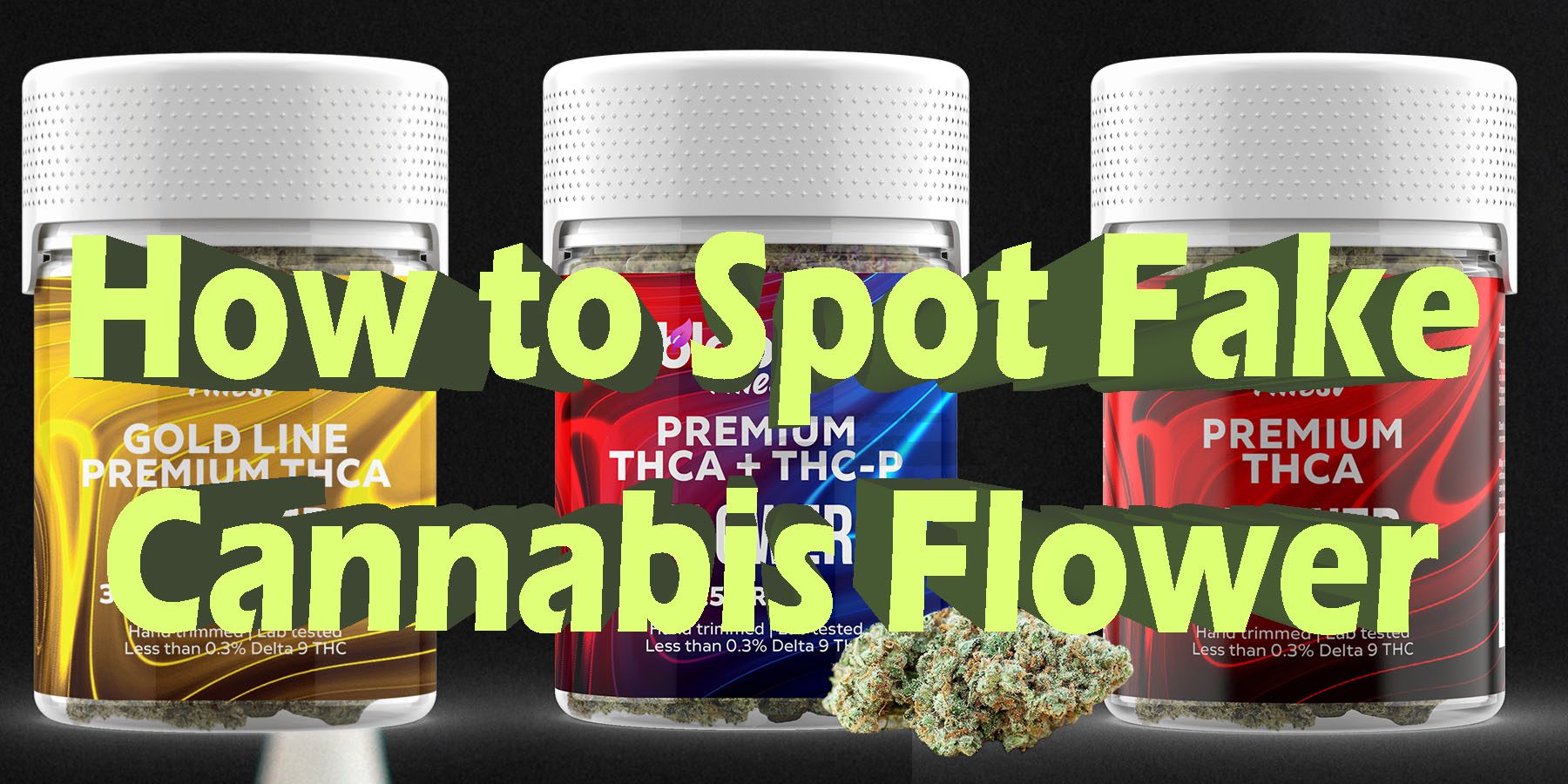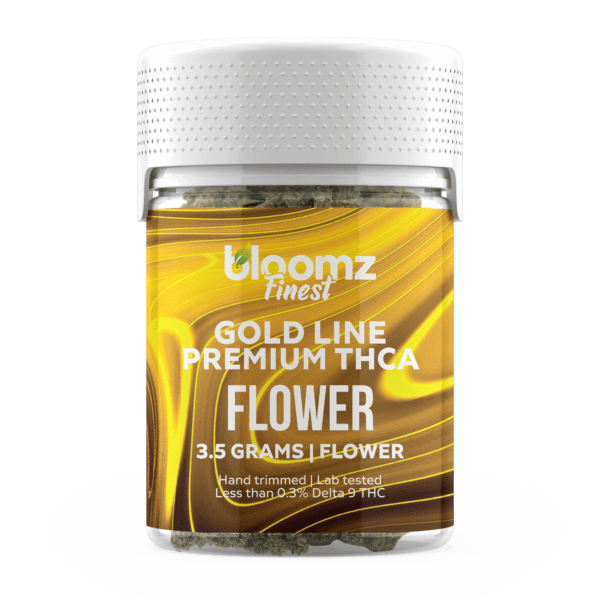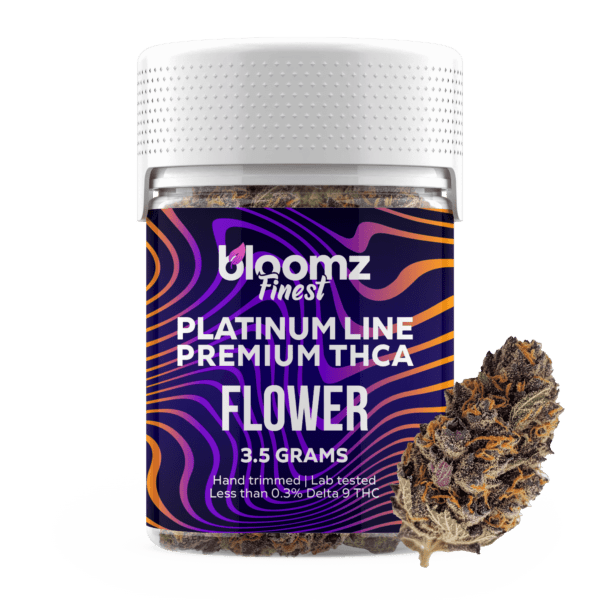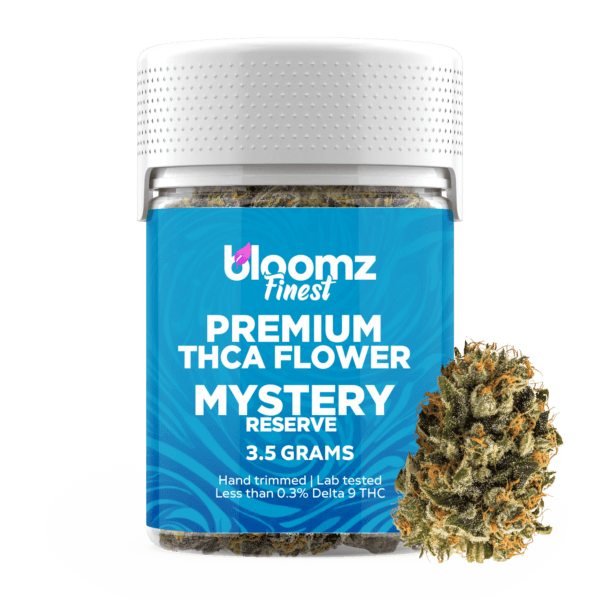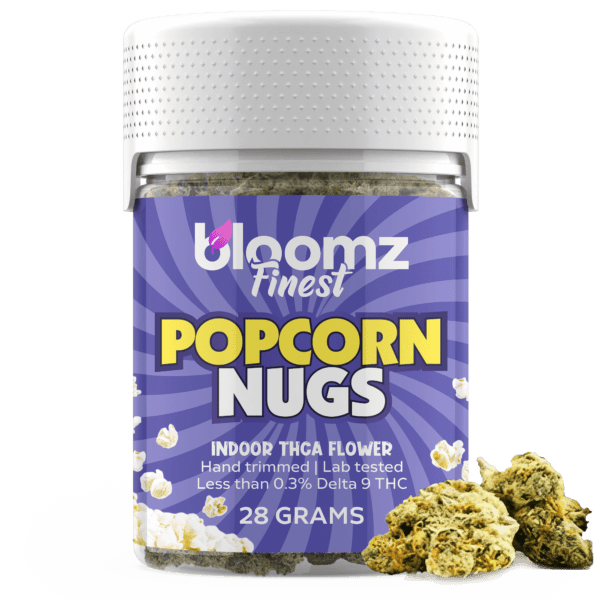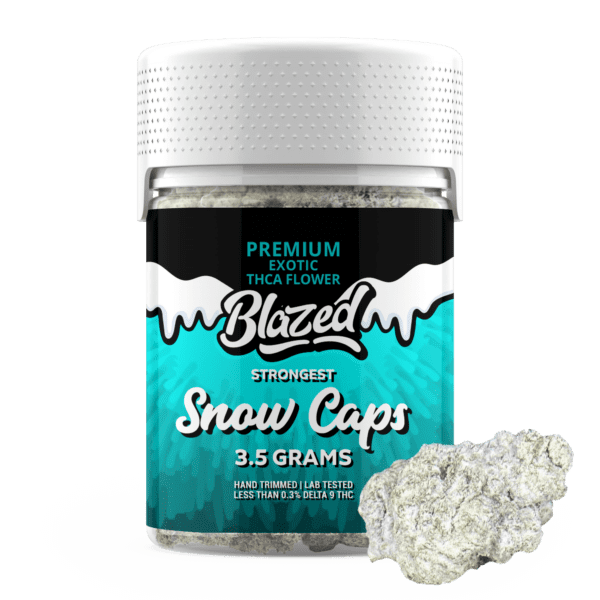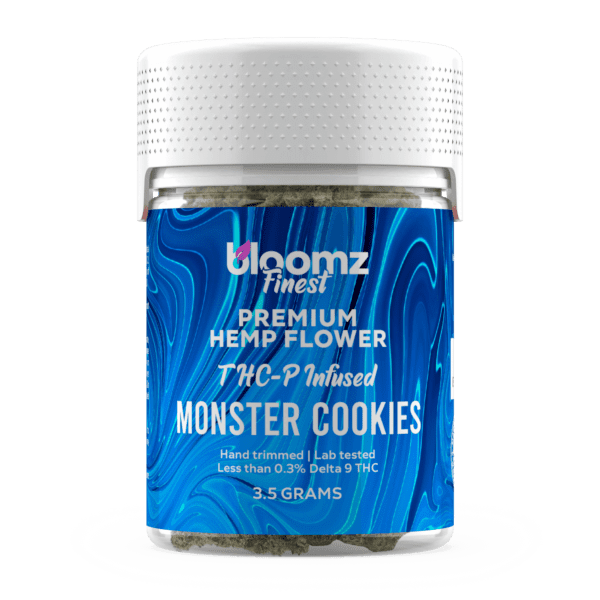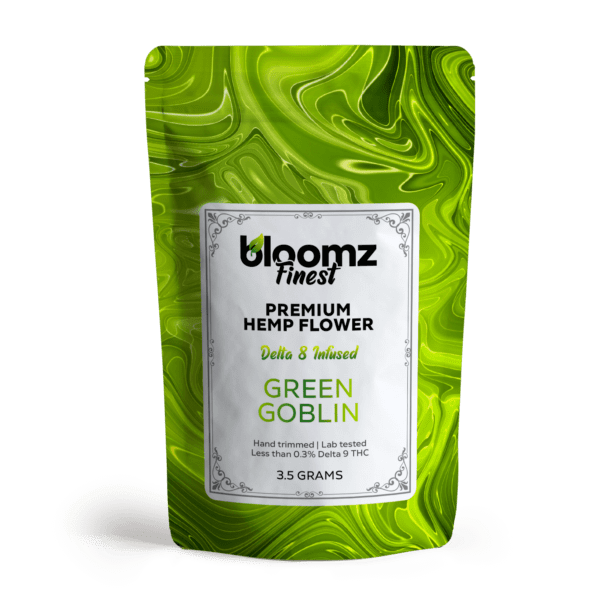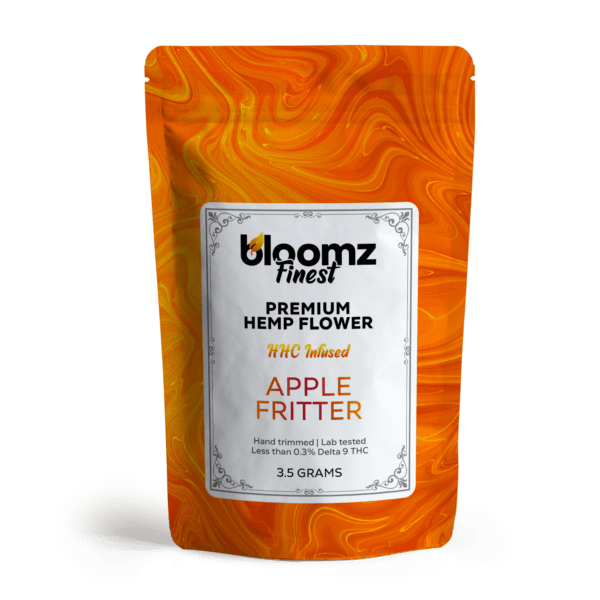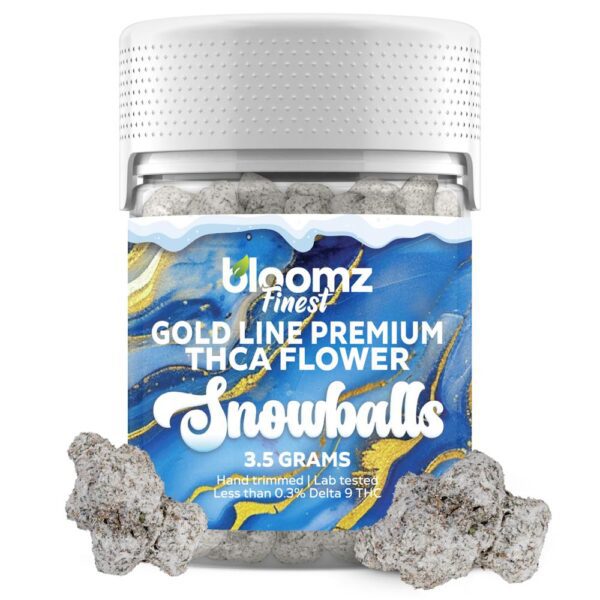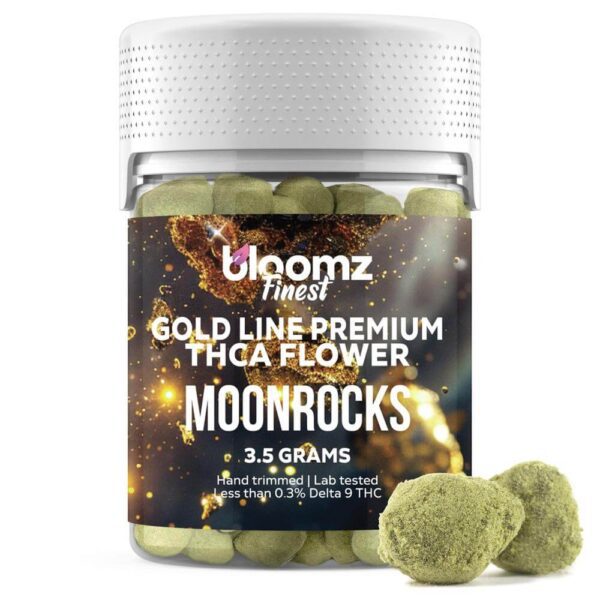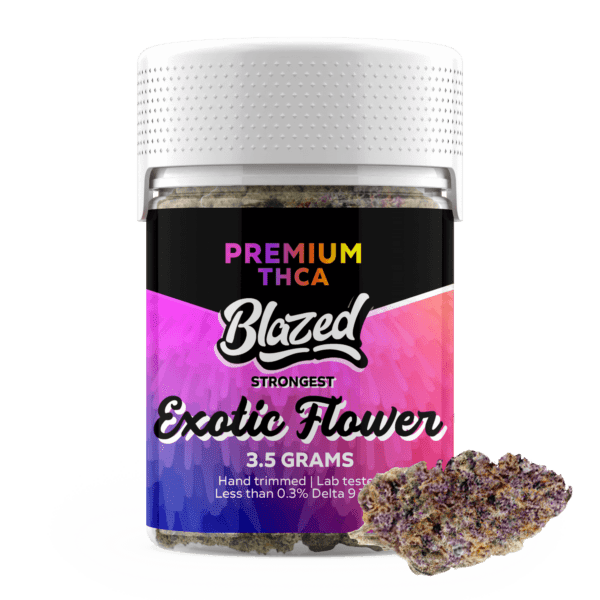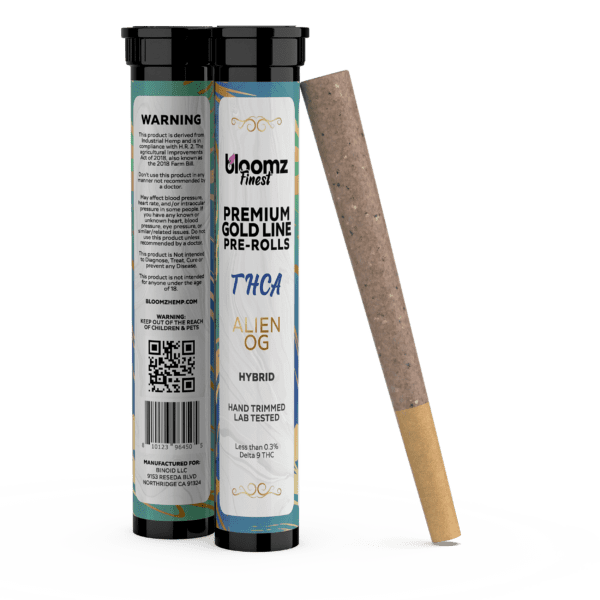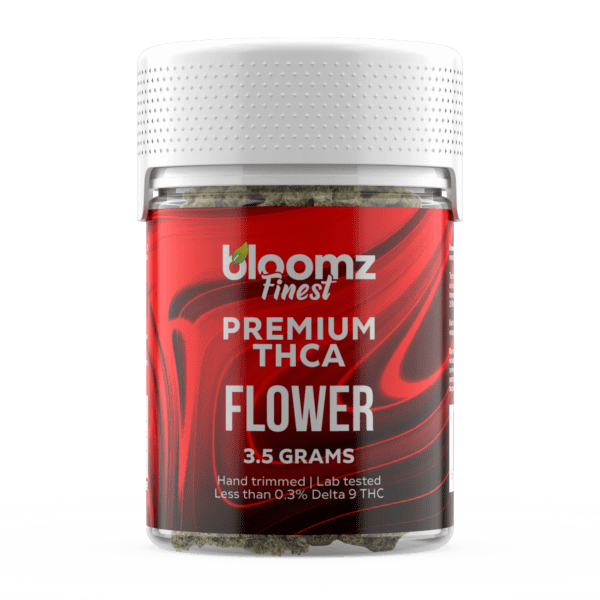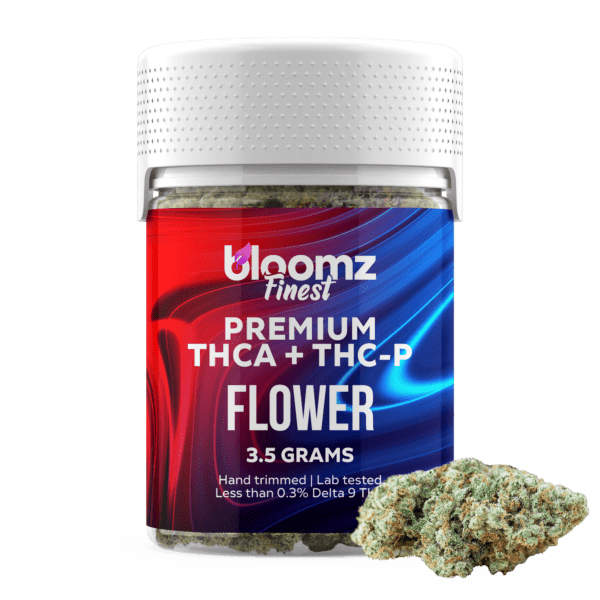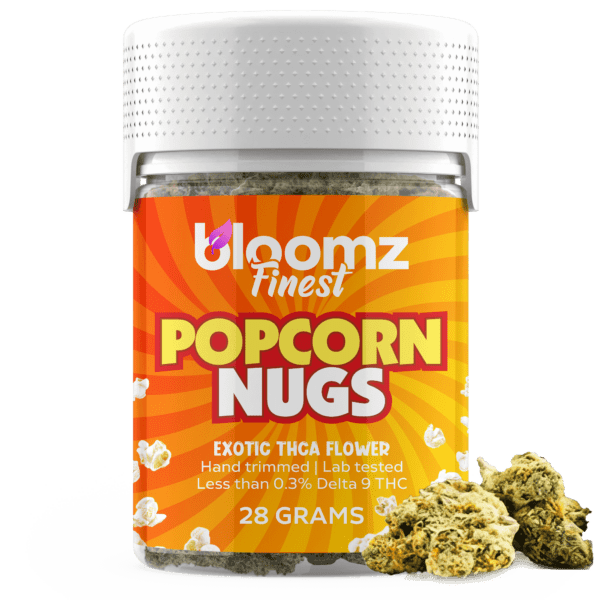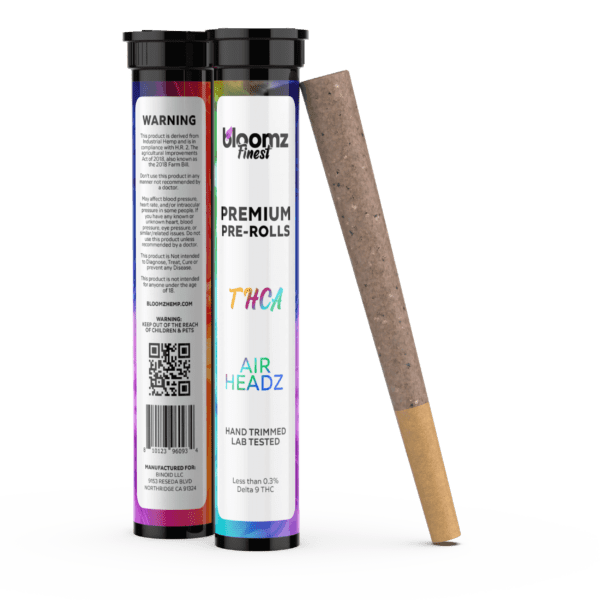The expanding world of cannabis is a vibrant and exciting space, filled with an ever-growing variety of products promising unique and enjoyable experiences. For many people, it’s a journey of discovery, a way to find a moment of bliss or a new sense of creative energy. However, as with any popular and valuable commodity, the market is not without its pitfalls. The unfortunate reality is that not all cannabis flower is created equal, and the difference between a premium product and a poor one can be vast.
Navigating this landscape requires a discerning eye and a bit of knowledge to ensure you’re getting the quality you expect and deserve. The quest for exceptional cannabis is not just about seeking a pleasant experience; it’s also about ensuring you are consuming a product that is clean, safe, and authentic. This understanding is your best tool for sidestepping the disappointment of a lackluster product and avoiding the potential risks associated with an illegitimate one.
To Buy Cannabis Flower Click Here
Recommended products
-
THCA Flower – Indoor Exotics – Gold Line
$37.99$69.99 -
THCA Flower – Platinum Line
$49.99$79.99 -
THCA Flower – Mystery Reserve
$41.99$79.99 -
THCA Smalls
$149.99$256.99
What Exactly is Cannabis Flower?
Before we delve into the art of spotting fakes and duds, it’s crucial to have a solid understanding of what authentic, high-quality cannabis flower truly is. The term “cannabis flower” refers to the smokable, trichome-laden blossoms of the female cannabis plant. These flowers, often called buds or nugs, are the most coveted part of the plant because they are the primary producers of cannabinoids and terpenes.
These are the naturally occurring chemical compounds that are responsible for the flower’s wide spectrum of effects, its distinct and often pungent aromas, and its complex flavor profiles. In the world of cannabis cultivation, growers go to great lengths to ensure these flowers reach their full potential, a process that is both a science and an art form. The result of this dedicated effort is a product that is not only effective but also a pleasure to behold, with a rich tapestry of colors, a frosty coating of resinous glands, and an aroma that can fill a room.
The journey from a tiny seed or a fragile clone to a perfectly cured, ready-to-enjoy cannabis flower is a long and intricate process that demands expertise, patience, and a deep respect for the plant’s life cycle. This meticulous craft is what separates mediocre cannabis from a truly premium product. A deep appreciation for this process can give you a better understanding of what to look for in high-quality flower. Here’s a more detailed breakdown of the steps involved in producing the cannabis flower that connoisseurs cherish:
Cultivation and the Vegetative Stage: The entire journey begins with the careful and deliberate selection of superior genetics. The chosen cannabis flower strain is the fundamental blueprint that will dictate the final product’s potential effects, its unique aromatic signature, and its complex flavor profile. Once the seeds have successfully germinated or the clones have firmly established their roots, the young plants enter the vegetative stage. During this crucial period, which can span from several weeks to a couple of months, the plant dedicates all of its energy to developing a robust and healthy root system, a strong, supportive central stalk, and an abundance of lush, green fan leaves. To encourage this vigorous growth, cultivators typically provide an extended light cycle, often between 18 and 24 hours per day, mimicking the long days of summer.
The Flowering Stage: To initiate the all-important flowering stage, cultivators must manipulate the plant’s environment by changing the light cycle to a strict regimen of 12 hours of light followed by 12 hours of complete and uninterrupted darkness. This shift in the photoperiod serves as a natural signal to the female plants, informing them that it is now time to transition their energy from vegetative growth to the production of cannabis flower. This phase is arguably the most anticipated and visually stunning part of the entire cultivation process. Over the course of the following weeks, the plants will undergo a final growth spurt, and the first signs of flower development will emerge at the nodes. These initial small buds will progressively swell and mature, developing the dense, highly resinous characteristics that are the hallmark of high-quality cannabis.
Harvesting at the Peak of Perfection: The timing of the harvest is a critically important decision that can profoundly influence the final quality, potency, and overall character of the cannabis flower. Experienced and skilled cultivators will employ a keen eye and often a magnifying glass to closely inspect the trichomes, the tiny, mushroom-shaped, crystal-like glands that cover the surface of the flowers. The color of these trichomes—which transitions from clear to cloudy and finally to amber—serves as a precise indicator of the plant’s peak maturity and the state of its cannabinoid profile. Harvesting too early can result in a product with underdeveloped potency and flavor, while waiting too long can lead to the degradation of some of the most desirable cannabinoids and terpenes.
Drying, Trimming, and Curing: After the harvest, the real artistry of post-production begins with the critically important drying, trimming, and curing process. The freshly harvested branches are carefully hung in a dark, climate-controlled environment where both temperature and humidity are maintained at specific, optimal levels. This slow and deliberate drying process is absolutely essential for preserving the full spectrum of cannabinoids and terpenes. Once the branches have reached the ideal level of dryness, the individual buds are meticulously trimmed of their excess leaves, either by hand for artisanal quality or by machine for efficiency. The trimmed buds are then transferred into airtight containers, typically glass jars, to begin the curing process. Curing, a patient process that can extend for several weeks or even months, is the final, crucial step in developing the flower’s full, nuanced flavor and rich aromatic profile, resulting in a product that is smoother, more flavorful, and ultimately, far more enjoyable.
Once the cannabis flower has been so carefully cultivated and expertly prepared, it can be enjoyed through several primary methods, each offering a unique experience. The most traditional and widely recognized method is smoking, which can be done using a variety of tools such as pipes, water pipes (often called bongs), or by rolling the ground flower into a joint. Smoking provides a very rapid onset of effects, as the active compounds are quickly absorbed into the bloodstream through the lungs. A more modern alternative that has gained immense popularity is vaporization, or vaping.
This method involves heating the cannabis flower to a precise temperature that is hot enough to release the cannabinoids and terpenes as a vapor, but not so hot as to cause combustion, which many users prefer for its cleaner taste and potentially gentler impact. Finally, cannabis flower can be used in cooking and baking to create edibles. This requires a process called decarboxylation, where the flower is heated to activate the cannabinoids, and then infused into a fat like butter or oil. These infusions can then be used in a vast array of recipes, offering a more potent and much longer-lasting experience with a slower onset.
When exploring the world of cannabis, you will inevitably encounter the primary classifications of Indica, Sativa, and Hybrid. Historically, these terms were used to describe the plant’s physical characteristics and geographical origins. Indica plants, originating from regions like the Hindu Kush, were typically shorter and bushier and were associated with more relaxing and calming effects. Sativa plants, found in equatorial areas, were taller and slenderer and were thought to produce more uplifting and energizing experiences.
Hybrids are crossbreeds of Indica and Sativa strains, designed to exhibit a combination of traits. However, due to extensive crossbreeding, these classifications are now more of a general guide. A more accurate way to anticipate the experience a particular flower will offer is to examine its specific cannabinoid and terpene profile, which provides a detailed chemical fingerprint of its potential effects.
The overall effects of cannabis flower are a complex and deeply personal experience, creating a symphony of sensations that can vary greatly from one person to the next. Generally, users report a range of effects that can be broadly categorized as either uplifting or relaxing. Some strains may induce a sense of euphoria, a feeling of light-heartedness and bliss that can make social situations more enjoyable and creative pursuits more inspired.
Others might lead to a state of being more chilled out, a deep sense of physical and mental relaxation that can melt away the tensions of the day. The experience can be a journey of heightened sensory perception, where music sounds richer, food tastes more vibrant, and the beauty of the natural world becomes more profound. It’s a shift in perspective that allows for new insights and a greater appreciation for the present moment.
Recommended products
Why Fake/Low-Quality Cannabis Flower Exist in the Industry
The existence of fake and low-quality cannabis flower in the market is an unfortunate byproduct of a thriving and, in many places, unregulated industry. The high demand for cannabis, coupled with the potential for significant profits, creates a powerful incentive for unscrupulous individuals and illicit operations to cut corners and deceive consumers. These bad actors are motivated by financial gain and operate outside the legal framework, which means they are not subject to the rigorous testing and quality control standards that are mandatory for licensed producers. This lack of oversight opens the door for a wide range of deceptive practices, from simply misrepresenting a low-grade product as top-shelf to engaging in far more dangerous forms of adulteration. Let’s explore this a bit further:
The Illicit Market: In regions where cannabis is not yet legal and regulated for adult use, the entire supply chain exists in the shadows, creating a fertile breeding ground for inferior products. Without a legal framework for production, mandatory testing, and transparent sales, there are absolutely no safeguards in place to protect the consumer from potential harm or deception. This creates a “buyer beware” environment where the quality, purity, and safety of a product are entirely at the mercy of the unregulated seller. This unregulated space is the primary source of fake and low-quality cannabis flower, as there are no legal or financial repercussions for selling a product that is contaminated, weak, or otherwise not as advertised, leaving consumers vulnerable.
The Pervasive Profit Motive: At its core, the issue boils down to simple economics. It is substantially cheaper, faster, and easier to produce low-quality cannabis flowers than it is to cultivate a premium, top-shelf product. Growing exceptional flower requires a significant upfront investment in superior genetics, advanced equipment, and a clean growing environment, not to mention a tremendous amount of time, expertise, and meticulous attention to detail. Illicit producers can drastically maximize their profit margins by cutting every conceivable corner, from using inferior seeds and skipping proper pest control to rushing the all-important drying and curing stages. In the most egregious cases, they may add weight to their product with dangerous contaminants or bulking agents to artificially inflate the quantity they can sell.
Deception Through Mislabeling and Branding: In a more deceptive tactic, some producers of low-quality cannabis flower will attempt to pass their inferior product off as a legitimate, high-end one. This can involve a range of misleading practices, such as mislabeling a common, low-grade strain with the name of a popular, potent, and highly sought-after one, like ‘Blue Dream’ or ‘OG Kush’. They might also invest in slick, professional-looking packaging that closely mimics the branding of well-known and reputable legal cannabis companies. This sophisticated deception is designed to deliberately trick unsuspecting consumers into paying a premium price for a product that is, in reality, vastly inferior in quality, potency, and safety.
A Persistent Lack of Consumer Education: For individuals who are new to the world of cannabis or who reside in areas that lack a legal, regulated market, it can be incredibly difficult to know what to look for in a quality product and what red flags to avoid. This significant knowledge gap can be easily and ruthlessly exploited by those who sell low-grade or counterfeit cannabis, as their customers may not possess the experience or sensory training to recognize the tell-tale signs of an inferior product. An educated and informed consumer, who knows how to assess a flower’s appearance, aroma, and texture, is the most effective defense against these predatory and deceptive practices.
The Challenge of Enforcement: Even in areas with legal and regulated markets, enforcing quality standards across the board can be a monumental challenge for regulatory bodies. The sheer volume of cannabis being produced and sold makes it difficult to inspect every single batch. Illicit operations can be difficult to track down and shut down, and they can often pop up again quickly in new locations. This ongoing cat-and-mouse game between regulators and illicit producers means that some low-quality and potentially unsafe products can still find their way into the hands of consumers, even in otherwise well-regulated markets, making consumer vigilance all the more important.
What Kinds of Fake/Low-Quality Cannabis Flower Might You Encounter?
Navigating the cannabis market, especially the illicit one, can sometimes feel like walking through a minefield. There are several types of fake or low-quality products that you might come across, ranging from the merely disappointing to the downright dangerous. Being able to recognize these in particular below can save you from a bad experience:
“Grit Weed”: This is a particularly nasty form of adulterated cannabis that has been intentionally contaminated with fine, abrasive particles to artificially increase its weight and to mimic the crystalline appearance of high-trichome flower. These contaminants can include sand, tiny glass beads, sugar, or even industrial abrasives like silica. The bud will feel unnaturally heavy and will have a gritty, sandy texture when rubbed between your fingers. A simple and effective test is to take a small piece of the suspect bud and rub it on a clean, smooth surface like a CD or a piece of glass; if it leaves visible scratches, you are almost certainly dealing with grit weed. Consuming this can be incredibly harsh on the throat and lungs.
Sprayed or Laced Cannabis: This represents one of the most dangerous and deceptive forms of fake cannabis. In these cases, unscrupulous dealers will take low-quality, impotent cannabis, or sometimes even completely inert plant material like damiana or marshmallow leaf, and spray it with a solution containing synthetic cannabinoids. These lab-created chemicals, often known by street names like “Spice” or “K2,” are designed to mimic the effects of THC but can be vastly more potent and have a range of unpredictable and severe side effects. This type of product often has a strange, acrid, or chemical-like smell that is distinctly different from the natural terpenes of cannabis, and it may have an unnaturally uniform, almost “plastic” appearance.
Poorly Grown Flower: The quality of the final product is a direct reflection of the care and expertise that went into its cultivation. Poorly grown flower is often the result of amateurish or neglectful growing practices. This can include using inferior genetics, providing inadequate lighting, or over- or under-feeding the plants with nutrients. A common issue is the failure to properly “flush” the plants—the process of giving them only pure water for the last week or two before harvest to remove excess nutrient salts. Flower that hasn’t been flushed properly will often have a harsh, chemical taste and will produce a hard, black ash when burned.
Poorly Cured Flower: The drying and curing process is an absolutely critical step that transforms a freshly harvested plant into a premium, smokable product. Poorly cured flower is cannabis that has been rushed through this stage. If it’s dried too quickly, it will have a harsh, unpleasant taste and a hay-like smell because the chlorophyll has not had a chance to break down. If it’s not dried enough and is packaged while still wet, it will be difficult to light, will have a muted flavor, and is at a very high risk of developing mold. This type of flower is a common disappointment, offering a lackluster and unenjoyable experience from start to finish.
Moldy Cannabis: Cannabis flower that has been stored in conditions with high humidity and poor airflow is highly susceptible to developing mold and mildew. This can appear in several forms, such as white, powdery spots (powdery mildew), grey, web-like fuzz (botrytis or bud rot), or even black sooty mold. It will almost always be accompanied by a distinct and unpleasant musty, damp, or basement-like smell that is easily distinguishable from the natural aroma of the flower. Consuming moldy cannabis, whether by smoking or vaping, can be harmful to your health, as it involves inhaling mold spores directly into your lungs, which can cause respiratory issues and other adverse reactions.
Contaminated Cannabis: Beyond mold, low-quality cannabis can be tainted with a host of other undesirable contaminants that you cannot necessarily see or smell. This is a particularly significant risk in the illicit market where no testing is required. These contaminants can include pesticides, fungicides, and other agrochemicals that were used during cultivation and were not properly flushed from the plant. In some cases, the flower can even be contaminated with heavy metals absorbed from the soil or from low-quality nutrient solutions. These hidden dangers underscore the importance of sourcing your cannabis from trusted, legal sources that provide third-party lab testing results.
“Brick Weed”: This is a term used to describe very low-quality cannabis that has been tightly compressed into dense bricks or blocks, usually for the purpose of easier and more discreet smuggling and transport across borders. The immense pressure used in this process crushes the delicate buds, destroys the fragile trichomes, and completely ruins the flower’s natural structure. The result is a hard, brown, flaky product that bears little resemblance to a proper cannabis bud. It typically has a very faint, grassy aroma, a harsh taste, and significantly diminished potency due to the degradation of the active compounds.
Recommended products
-
THCA Moonrocks – Gold Line
$57.99$89.99 -
Blazed Exotic THCA Flower
$36.99$79.99 -
Exotic THCA Pre-Rolls Gold Line – 3-Pack/6 Pack
$36.99$69.99
Avoiding Fake/Low Quality Cannabis Flower: What to Keep an Eye Out For
Developing a keen eye, a sharp nose, and a discerning touch is your best defense against the disappointment and potential dangers of fake or low-quality cannabis flower. Essentially, by training your senses to recognize the hallmarks of a quality product, you can navigate the market with confidence. And so, these would be key things to watch out for when assessing the quality of cannabis flower:
Vibrant Color: Truly high-quality cannabis flower should be visually appealing, boasting a rich and vibrant color palette. This is typically a spectrum of deep and lively greens but depending on the strain’s genetics and the growing conditions, it can be beautifully accented with hues of deep purple, bright orange, fiery red, or even cool blue. Be extremely wary of flower that appears brown, tan, yellow, or has a dull, bleached-out look. These off-colors are often clear indicators of age, light damage, poor genetics, or an improper and rushed curing process. A very light, almost neon green might also be a red flag for a premature harvest.
A Rich and Pungent Aroma: The smell, or “nose,” of the cannabis flower is one of the most immediate and reliable indicators of its quality and character. Good cannabis will have a strong, pungent, and complex aroma that tantalizes the senses and reflects its rich terpene profile. It might smell intensely citrusy like lemons or oranges, earthy and piney like a forest floor, sweet and fruity like berries, or have a classic skunky or gassy funk. If the flower has very little smell, or if it smells of hay, dried grass, must, or dampness, it’s a major warning sign that it was not dried and cured properly, is old, or is potentially harboring mold.
Visible Trichome Coverage: The surface of a premium Cannabis flower should be generously coated in a thick, frosty layer of tiny, glistening, crystal-like structures. These are the trichomes, and they are the microscopic factories that produce and store the vast majority of the plant’s cannabinoids and terpenes. A dense and visible coating of these resin glands is a strong indication of potency and a rich flavor profile. You should be able to see them sparkling under a light. If the flower looks dull, matte, and lacks this characteristic sparkle, it has likely been handled poorly, over-trimmed by a rough machine, or is simply a product of inferior genetics and will be less potent.
A Sticky, Spongy Texture: The tactile feel of the bud can tell you a great deal about its cure and freshness. When you gently squeeze a well-cured bud between your fingers, it should be slightly sticky to the touch from the resinous trichomes and have a satisfyingly spongy texture, compressing slightly before bouncing back to its original shape. If it’s overly dry and crumbles into a fine dust with minimal pressure, it’s old and will likely be harsh and unpleasant to smoke. Conversely, if it feels wet, damp, or overly pliable and doesn’t break apart easily, it hasn’t been cured properly and is at a high risk of developing mold.
Good Bud Structure: While size isn’t everything, the structure and density of the buds are important quality indicators. High-quality cannabis flowers should be relatively dense, tight, and well-formed. Sativa-dominant strains might naturally be a bit fluffier and more spear-shaped, while Indica-dominant strains are often tighter, rounder, and more compact, but both should look robust, healthy, and substantial. You should actively avoid flower that is “larfy”—a term for buds that are loose, airy, and wispy—or that appears to be mostly stem with very little actual flower material, as this indicates it came from the lower, less-developed parts of the plant.
Absence of Seeds and Stems: A truly top-shelf cannabis product should be composed almost entirely of pure, smokable flower. The presence of an excessive number of seeds and stems is a clear and undeniable sign of a low-quality product and lazy cultivation. Seeds are a major flaw; their presence indicates that the female plant was pollinated, which forces it to divert its precious energy from producing potent, resinous flowers to producing seeds instead. They add unwanted weight, can taste terrible when burned, and can even pop and spark. Stems are also undesirable as they contain very few active compounds and contribute to a harsher experience.
A Clean Trim Job: A proper trim is the finishing touch that separates premium flower from mediocre buds. A well-trimmed bud, whether meticulously sculpted by hand or carefully processed by a high-quality machine, will have the vast majority of its small, leafy foliage (sugar leaves) removed. This allows you to clearly see the beautiful structure of the flower itself and ensures you are paying for potent bud, not leaf material. A sloppy trim job with an abundance of leaves still attached is often a sign of a rushed and careless production process and will result in a harsher, less flavorful smoke.
The Source and Reputation: In the modern cannabis landscape, where you buy your product is just as important as what you buy. Whenever possible, you should exclusively purchase your cannabis from a legally licensed and reputable dispensary. These establishments are required by law to source their products from licensed growers who are subject to strict, state-mandated testing for both potency and a wide range of potential contaminants. Buying from a trusted, legal source is the single most effective and reliable way to ensure that you are getting a safe, clean, and authentic product that is exactly what it claims to be.
Lab Testing and Packaging: In regulated legal markets, high-quality cannabis will be sold in professional, sealed, and often child-resistant packaging. This packaging should include a wealth of information, including the strain name, the name of the cultivator, the harvest and packaging dates, and, most importantly, a sticker or label detailing the results of third-party laboratory testing. This lab report will show the precise potency of major cannabinoids like THC and CBD and will verify that the product is free from harmful pesticides, heavy metals, mold, and other contaminants. Be extremely wary of any product that lacks this crucial information.
The Sound of the Snap: The auditory feedback from a bud can be a surprisingly accurate indicator of a proper cure. A perfectly cured cannabis flower will make a distinct and satisfying snapping sound when you bend a stem or break a bud apart. This crisp snap signifies that the flower has achieved the ideal moisture content—dry enough to burn evenly but still retaining enough internal moisture to preserve its terpenes and cannabinoids. If the stem bends like a piece of wet spaghetti without breaking, the bud is too wet. If the entire bud disintegrates into powder upon handling, it’s far too dry.
The Ash Test: The color and texture of the ash produced when you smoke cannabis can provide valuable clues about the quality of the cultivation and curing process. High-quality, well-grown, and properly flushed cannabis will typically produce a clean, light gray or almost white ash that is soft and flaky. This indicates a complete and clean combustion. If the ash is dark black, hard, and clumpy, it can be a strong indication that the plant was not properly flushed of excess nutrient salts and minerals before it was harvested. This residual material can result in a harsher taste, an unpleasant experience, and difficulty keeping the flower lit.
Trust Your Instincts: At the end of the day, after all the visual, aromatic, and tactile checks, your own senses and intuition are your most reliable and final guide. If a product looks, smells, or feels “off” in any way, it probably is. Don’t be swayed or tempted by an unusually low price, a hyped-up name, or pressure from a seller. Trust your gut feelings and be willing to walk away from any product that doesn’t meet your standards of quality and safety. A little bit of well-placed caution and self-trust can save you from a great deal of potential disappointment and risk.
Don’t Be Fooled By Fake or Inferior Cannabis Flower Calling Ever Again!
The pursuit of quality is a journey, not a destination, and in the world of cannabis, this could not be truer. The path to becoming a discerning consumer is paved with knowledge and a keen awareness of the subtle cues that separate the exceptional from the merely acceptable. By arming yourself with an understanding of what makes a truly great cannabis flower, you transform from a passive buyer into an active and empowered connoisseur.
You are no longer at the mercy of slick marketing or deceptive practices. Instead, you hold the power to assess, to question, and to choose with confidence, ensuring that every experience is one that is not only enjoyable but also authentic and pure. Let your senses be your guide and your knowledge be your shield, and you will find that the world of premium cannabis flower opens up to you in all its fragrant, glistening glory.

